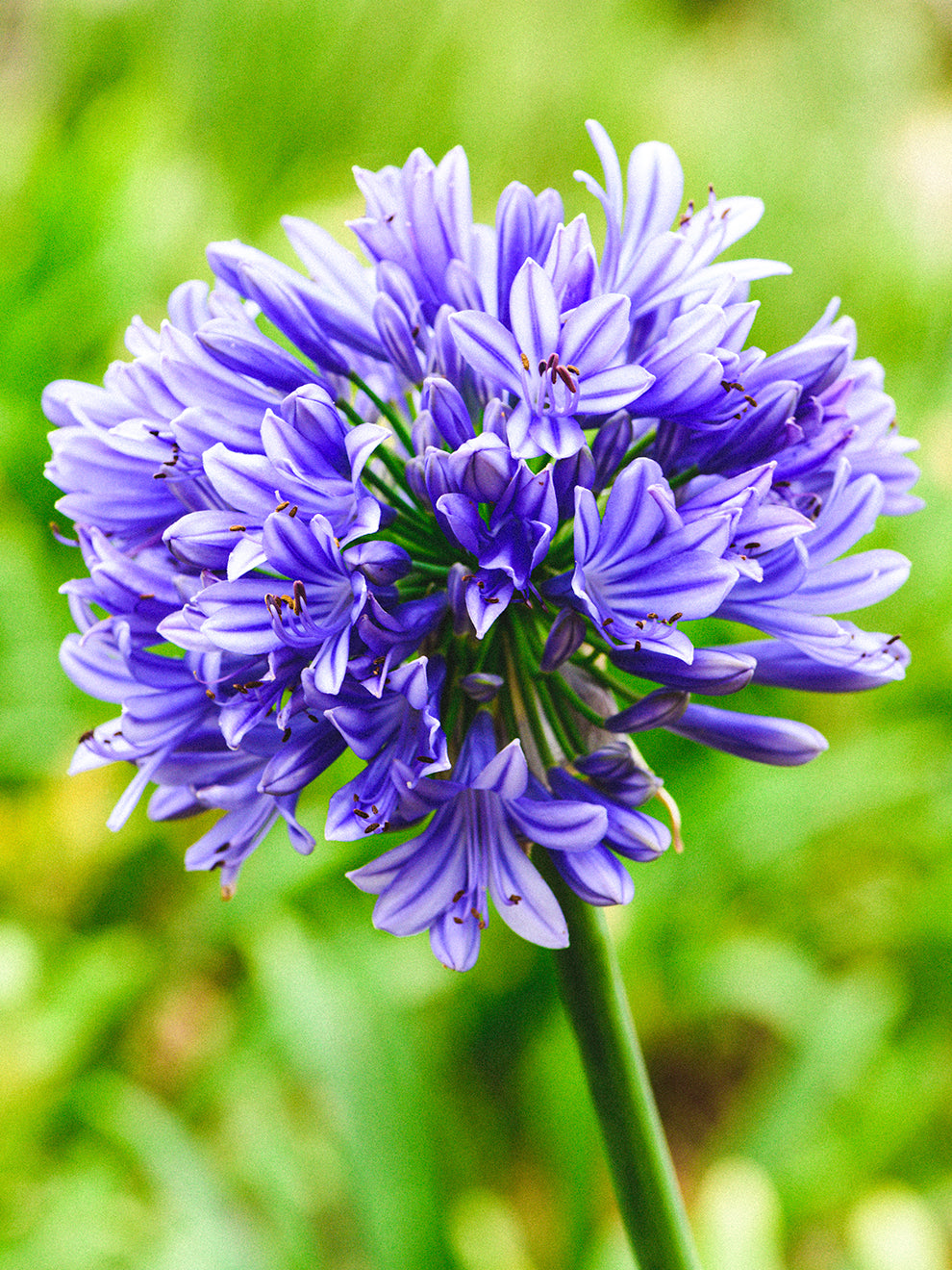Agapanthus Breeding: Tips for Expanding Your Plant Collection
Agapanthus Breeding: Tips for Expanding Your Plant Collection
Blog Article
Grasping the Art of Agapanthus Treatment: Crucial Steps for Healthy And Balanced Development and Vibrant Blossoms
In the realm of cultivation, the growing of agapanthus stands as a fulfilling endeavor for those that look for to support these sophisticated flowering plants. From selecting the appropriate variety to mastering pruning methods, the trip towards growing prospering agapanthus plants is complex and holds the essential to opening the complete capacity of these agricultural treasures.

Selecting the Right Agapanthus Selection

When selecting the appropriate Agapanthus variety for your yard, think about factors such as environment viability, flower color, and growth habit. Furthermore, consider the environment in your area to make certain the Agapanthus range you choose can thrive in your certain conditions. Comprehending the development behavior of different Agapanthus varieties is important for correct placement within your yard.
Perfect Planting Conditions
Thinking about the ideal environmental demands is vital for successful Agapanthus cultivation. Agapanthus thrives in well-draining dirt with a slightly acidic to neutral pH level. When planting, select an area that receives complete sunshine to partial shade. In hotter climates, giving some mid-day color can avoid scorching of the fallen leaves. Agapanthus plants are sensitive to cold temperature levels and should be shielded from frost during cold weather.
To ensure healthy and balanced development and dynamic blossoms, plant Agapanthus light bulbs at a deepness of regarding 2-4 inches and space them 8-12 inches apart. Mulching around the base of the plants helps preserve dampness and suppresses weed growth.
Watering and Feeding Tips
Preserving proper dampness degrees and giving important nutrients are essential elements in the treatment program for Agapanthus plants. When it comes to sprinkling Agapanthus, it is critical to strike an equilibrium. These plants prefer consistently moist dirt but are at risk to root rot if overwatered. During the expanding period, water deeply once a week, guaranteeing the soil is well-draining to stop waterlogging. In hotter climates or throughout durations of dry spell, even more frequent watering may be needed to maintain the dirt equally damp. Nonetheless, decrease watering in the winter months to avoid waterlogged problems.
Feeding Agapanthus is important for promoting healthy and balanced development and respected flowers. Apply a balanced plant food, such as a 10-10-10 formula, in the early spring as brand-new development arises. By following these watering and feeding tips, you can ensure your Agapanthus plants thrive and generate vivid, durable blooms.
Pruning Methods for Agapanthus
Pruning Agapanthus plants at the appropriate times and with proper strategies is vital for preserving their health and promoting optimal development and flowering. The perfect time to prune Agapanthus is in late wintertime or very early springtime prior to brand-new development arises.
For flowered stems, wait until the blossoms have actually perished and after that cut them back to the base. This not only tidies up This Site the plant's appearance yet likewise encourages the advancement of new flower buds. Deadheading invested flowers can likewise reroute the plant's energy right into generating even more blooms as opposed to establishing seeds. Nonetheless, if you desire to accumulate seeds for propagation, leave some blossoms to completely dry and mature on the plant.
Keep in mind to utilize clean, sharp devices to make accurate cuts and minimize the risk of presenting illness. Agapanthus. Regular trimming will help maintain your my site Agapanthus looking healthy and cool while making certain a bountiful screen of stunning flowers
Dealing With Typical Pests and Conditions
After making sure appropriate pruning techniques for Agapanthus, it is important to attend to common pests and conditions that can influence the health and vitality of these plants. Agapanthus plants are normally durable yet can still succumb to specific issues. One typical pest that affects Agapanthus is the Agapanthus gall midge. This small, orange fly lays its eggs in the vegetation, causing distorted development and flower buds that stop working to open. To fight this pest, trim and destroy any kind of affected plant parts and consider utilizing insecticidal soap.
Additionally, Agapanthus plants can experience from root rot if they are grown in poorly draining pipes dirt. By being cautious and taking prompt activity versus conditions and pests, you can help your Agapanthus plants thrive and produce dynamic blooms. Agapanthus.

Verdict
To conclude, mastering the art of agapanthus care involves picking the appropriate variety, supplying excellent growing problems, proper watering and fertilizing, proper pruning techniques, and resolving typical pests and diseases. By following these necessary steps, you can make certain healthy development and vivid blooms for your agapanthus plants. Bear in mind to on a review regular basis keep track of and keep your plants to promote their overall wellness and long life.
To make certain healthy growth and vibrant blooms, plant Agapanthus bulbs at a deepness of about 2-4 inches and space them 8-12 inches apart. By adhering to these watering and feeding ideas, you can guarantee your Agapanthus plants flourish and produce lively, long-lasting blossoms.
One typical insect that impacts Agapanthus is the Agapanthus gall midget. In addition, Agapanthus plants can endure from origin rot if they are grown in poorly draining soil. By adhering to these important actions, you can make sure healthy and balanced development and vivid blooms for your agapanthus plants.
Report this page